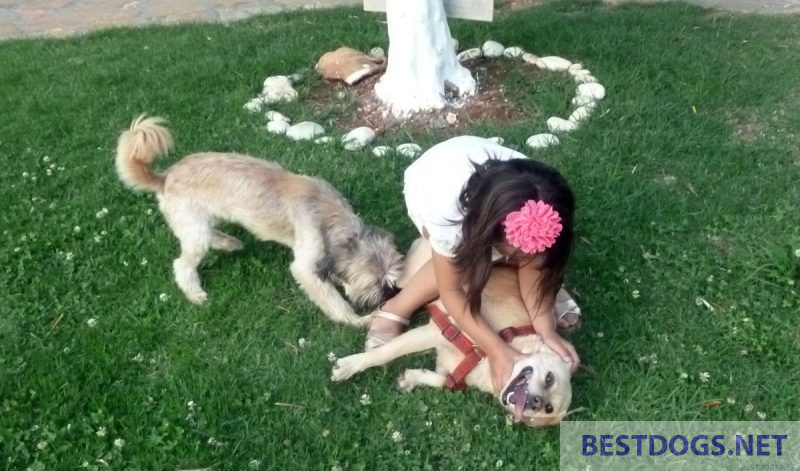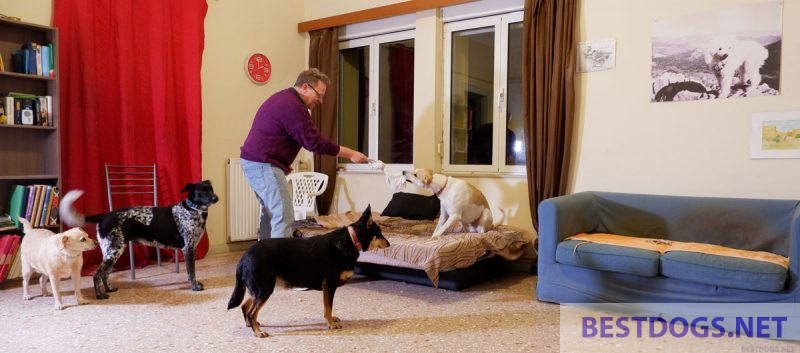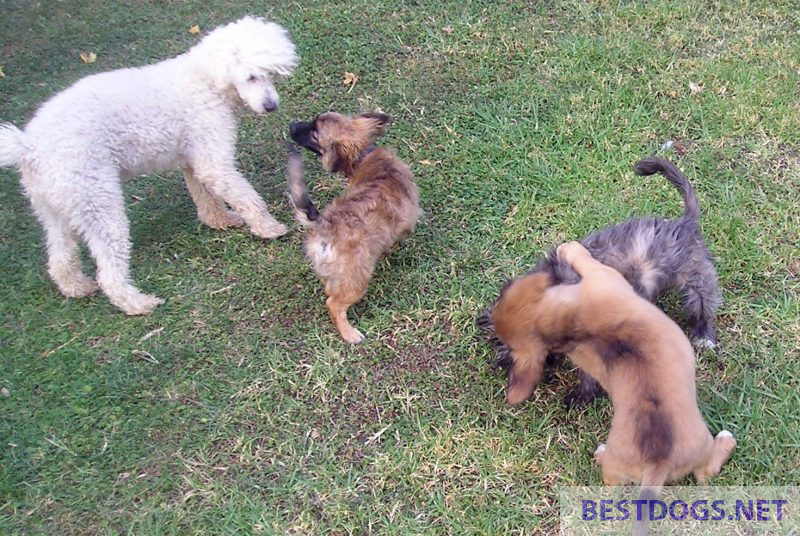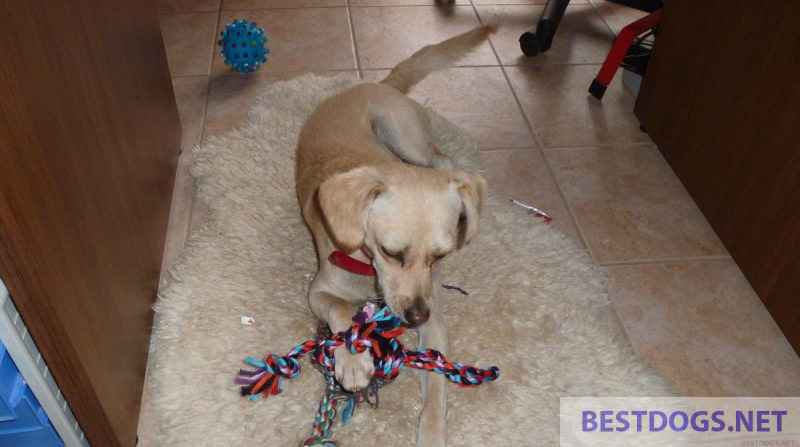Attachment is the bond between dog and owner.
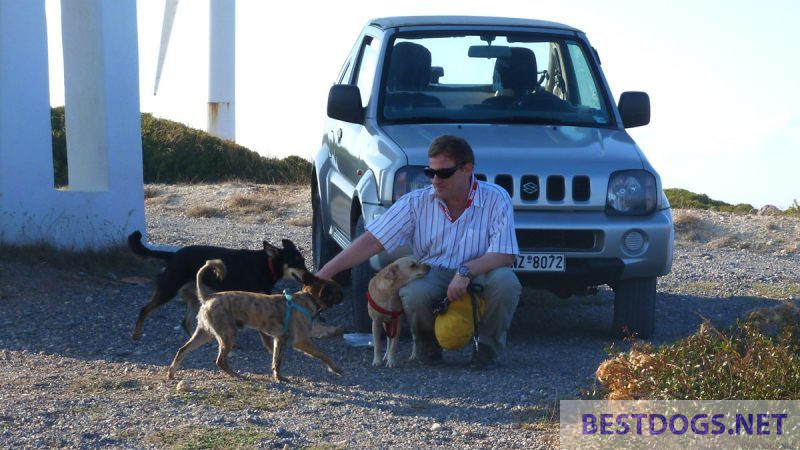
Attachments
Table of Contents
Attachments can be understood simply as the bond and relationship that the owner has with his dog.
Although the term ‘attachment’ originated to describe the developing bond of affection between a human infant and its caregiver, it has since become common to apply it to a variety of social relationships.
This includes the relationship with the dog, because in laboratory experiments it was found that the dog’s relationship with humans resembles a parent-child relationship. This is because the behaviors exhibited in the experiments can be categorized in the ranges from a secure to insecure attachment, as is the case with the interactions between mother and child.
Secure attachment is essential for a baby to develop into a mentally healthy adult, and it has important implications for dogs as well. The degree of attachment the dog has to the owner and other family members can be directly influenced by what it has experienced in the past and what it expects in the future.
There are five categories of attachment. A dog with a secure attachment is happy to have close contact with people, even those he doesn’t know very well. Dogs with an avoidant bond, on the other hand, may be hesitant to approach, let alone be handled.
The bond that the owner has with his dog is a very significant aspect of understanding why they behave in a certain way.
Dogs that have a secure attachment usually exhibit positive behavior. Dogs with insecure attachment differ in some ways, but generally do not like to be left alone, are overly ‘clingy’ and ‘needy’, and may exhibit other questionable behaviors.
For example, an insecure, avoidant dog may avoid contact with humans altogether and be very reluctant to approach. An insecure, on the other hand, ambivalent dog will show varying degrees of greeting behavior, sometimes being friendly and affectionate, but sometimes showing defensive behavior. An insecure, disorganized dog shows random, extreme greeting behavior and can be very worrisome.
Attachment Levels
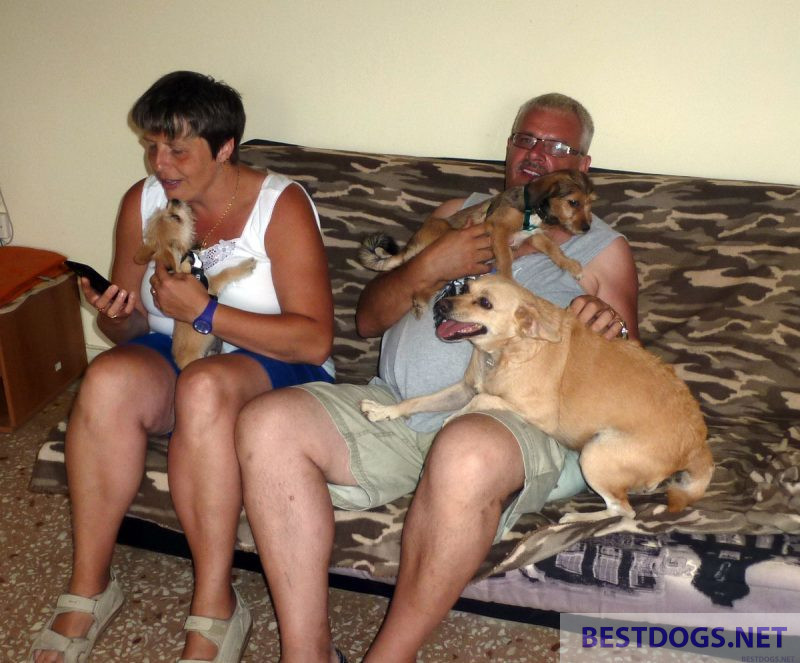
Strengthened attachment:
Exploration of observing behavior of master.
The dog shows some concern when the owner or caregiver leaves or looks through the door, but continues to observe or engage.
A consistent, confident, and happy greeting behavior.
When a dog has a secure attachment, it is happy to be with the owner and also confident enough to show some level of independence.
Insecure attachment:
The dog can be very affectionate and suffers significant stress and possible anxiety when left alone.
Avoidant attachment:
Avoidant behavior occurs toward the owner, but may be observed, especially with strangers. Stress and possible anxiety when the dog is left alone.
Ambivalent attachment:
The dog shows alternating opposite behaviors and different reactions to greetings. One day he shows happy greeting behavior, the other day he avoids contact.
Confused attachment:
The dog exhibits confused attachment behavior. There is inconsistent attachment status that varies randomly. For example, one day he is happy to greet his attachment person, the next day he exhibits potentially aggressive behaviors.
Influencing the behavior of the dog
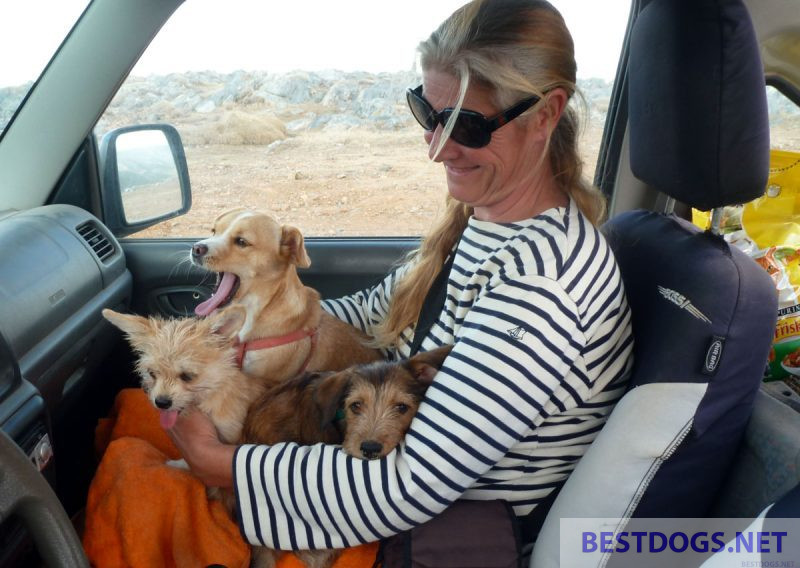
Building a dog’s bond and security requires the development of trust through positive experiences. Punishment is a negative experience and therefore very likely to undermine the bond or attachments between owner and his dog.
When a dog exhibits an undesirable behavior, it may well be due to a lack of guidance from training or a disruption in one of its behaviors for survival, the so-called ‘core needs’.
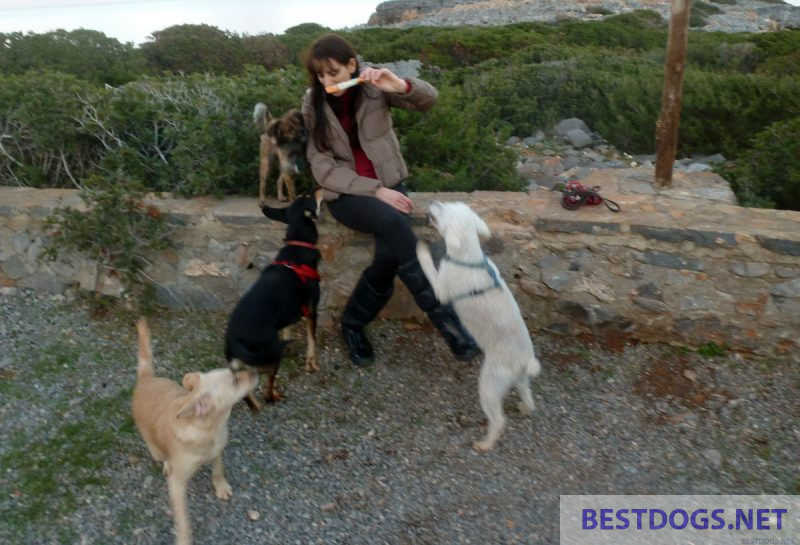
This brings us to an examination of the specific techniques used to influence a dog’s behavior. Positive reinforcement means rewarding the dog when it performs a behavior we want, which causes the dog’s brain to release ‘feel good’ chemicals, so it is very likely to enjoy the training and learn incrementally.
However, the only thing that causes punishment is fear. Therefore, it is recommended that you avoid the training methods listed below:
Electronic collar:
The electronic collar allows a trainer to remotely administer electric shocks of varying strengths to the dog. It uses extreme punishment to inflict pain on the dog when it exhibits a certain behavior.
Imagine the fear and confusion of the dog not knowing that a device has been strapped around his neck, but feeling the pain very well when his behavior results in an electric shock. This is a sure way to traumatize the dog, create depressive feelings, and lead to a complete shutdown of the mind.
There are examples of working with a dog that was extremely traumatized because it had been ‘trained’ in this way once before. Thus, the animal could not stay in the same room as in object that reminded it of the remote control of the device. It trembled at the sight of a TV remote and became so noise-phobic that it almost couldn’t stand the outside world. How this must affect its attachment status, trust and confidence in people is quite obvious. These dogs can be deeply impacted by this, and it can take years for them to regain trust.
Spray Collar:
This device sprays a mist of spray, often into the dog’s face, and can be activated by remote control or triggered by vibrations such as barking.
These devices can also cause the dog to become calm and depressed by suppressing its behavior, and can also cause phobic reactions to noise.
Throwing chain:
The throwing chain is thrown at the dog’s butt when he does something the owner doesn’t like, or even to get his attention. However, if the chain is thrown with too much force or hits a vulnerable spot like the eye, it causes severe pain
Shake can fill with pebbles or coins:
Such objects are used to startle and frighten the dog into stopping what it is doing. These items also cause defensive reactions in the dog and also do not address the emotional origins of his behavior.
‘Flooding’:
This term describes it when the dog is exposed to something excessively that he doesn’t like and makes him anxious. However, this method can also be extremely harmful.
For example, a dog that is afraid of other dogs is left to sit in a room full of dogs. This can cause total internal withdrawal in the unhappy dog who cannot escape the situation, especially if punishment is then used. It is likely that the dog’s anxiety will worsen and may reach a point where it is so fearful and stressed that it begins to shut down completely. This should be avoided.
Choke chains:
Choke chains cause pain and tighten when the dog pulls on them. Although they are still widely used, especially on dogs that pull hard on the leash, their use is not advisable as they can even cause injury if not used properly.
Traps:
Traps are set in such a way that, for example, when a dog steals food or raids trash cans, something falls on it and causes it to feel pain or become frightened. This can cause severe anxiety and insecurity.
Spray bottle or water gun:
These are filled with water and perhaps mixed with a small amount of mouthwash or vinegar so that they are more of a deterrent. This may suppress the undesirable behavior, but may cause a water phobia in a very fearful dog.
However, with other, more confident members of the species, this is less of a problem and if the water spray is delivered without much fuss or address, the dog will recognize the connection of its behavior to the water spray without transferring it negatively to its master.
Ironically, these methods merely suppress the unwanted behavior, as the root cause of the concern is not addressed. Suppression of unwanted behaviors can lead to a ‘spontaneous reaction’ where the behavior returns by surprise in the future and much more violently or occurs in a different way.
You can’t help a dog overcome its fears by electrocuting it. This only makes things much worse and ensures that he suffers in the process.
Only by addressing the cause of your dog’s behavior can you change his behavior and turn it into a different response.
Electrocuting a dog that barks or growls at other dogs out of fear, or shaking a can with rocks will not make him stop being afraid. It does not make him more confident, less fearful, or more sociable. It just suppresses the barking and growling, so it no longer occurs – but he is still afraid, and the reason for his behavior is disregarded. This is the fundamental problem with the use of punishment, and to some degree, negative reinforcement of the unwanted behavior.
The alternative to causing pain and suffering is to deal with the issue. The interesting thing is that this alternative is often simpler and more effective than one might think.
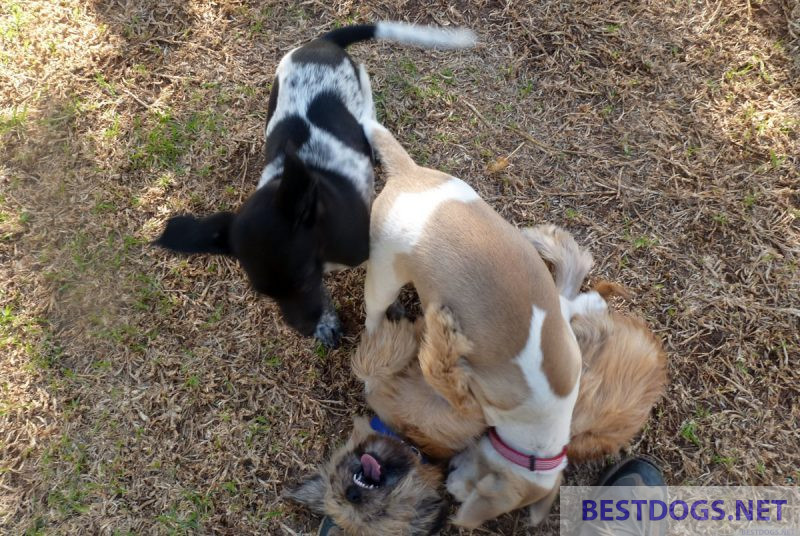
Integration of a rescue dog
Training, leadership and guidance in the life of the dog is particularly important. Therefore, the dog owner should be able to naturally make a four-legged friend to be content and enjoy life with him. This training should be successful for everyone – dog and owner, with a special focus on the rescue dog and its owner, as they both may need a little more help to achieve this goal.
Training with punishment through fear can lead to further undesirable behavior resulting from increased levels of fear. The very term ‘rescue dog’ expresses that such an animal has suffered many times in some way, so its attachment status may be fragile.
One thing is certain, however: if you want to successfully integrate a rescue dog into your home, you will not succeed if you do not know how to influence your dog’s behavior in a fair and friendly manner.
